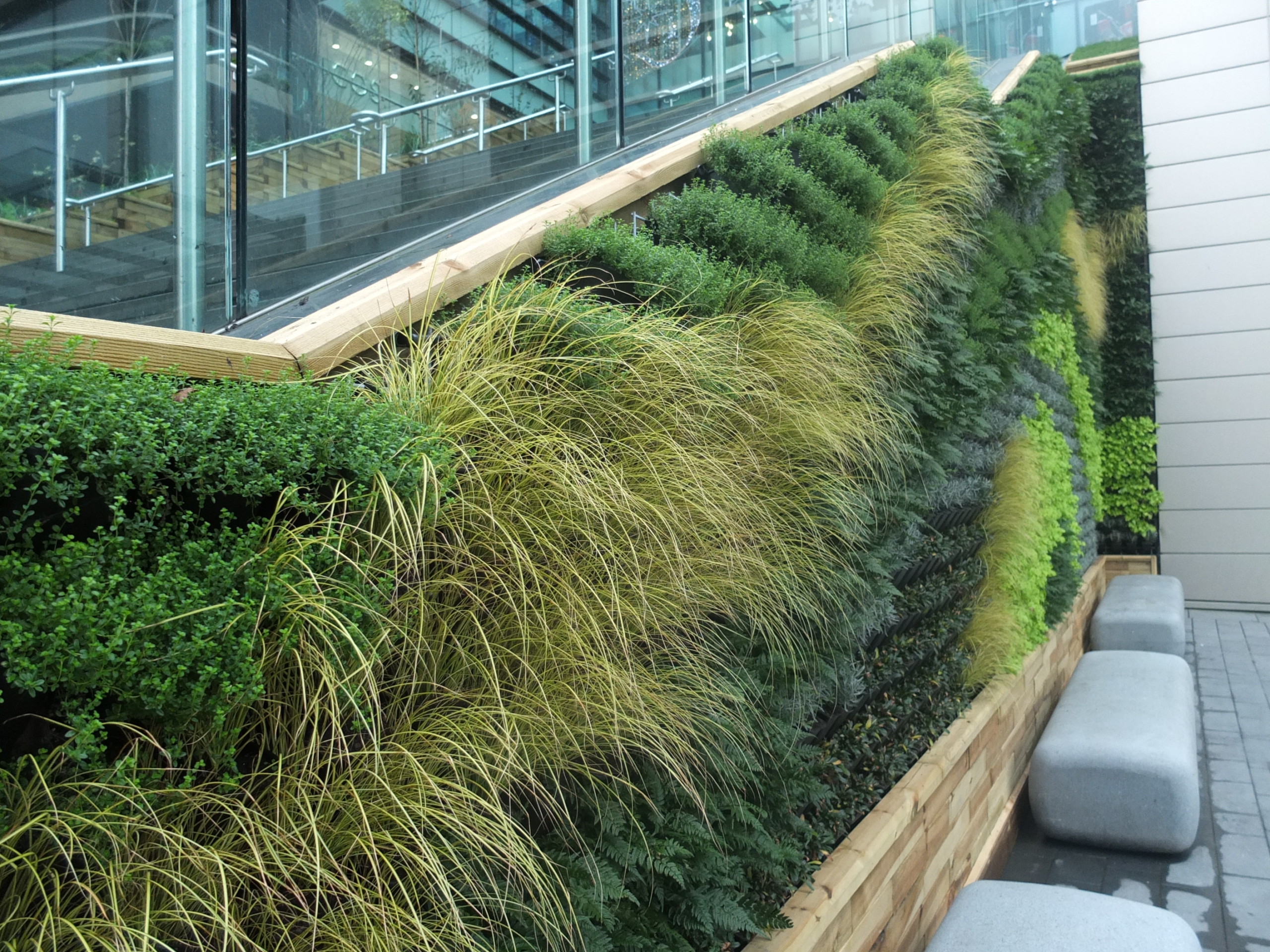
Stop and Stair: why plants are a step towards bringing life to the humble staircase
-
16 May 2017
Stairs aren’t typically the place we think of when planning planting schemes but, when chosen carefully, they can bring fresh interest to an often non-descript part of the building.
I was recently asked to contribute to a blog on staircase planting. It may not be something we often consider when planning office plants, or even plants for homes. Certainly, there aresafety concerns about obstructions, not to mention the fact that we don’t really think of creating a nice look for the humble staircase, where nobody would be likely to stop and admire the greenery.
It is popular to position large office plants underneath open stairways, to stop people coming too close and banging their heads, or they can look great at the bottom of stairwells which curve or bend around, bringing life to often unused and dull spaces, but rarely are we asked to put planting on the stairwell itself.
However, as I thought more about it, I realised there was quite a bit of scope for creating interesting planting on the staircases, and why shouldn’t we have some visual interest as we pass through to another floor?
So, here are my top five ideas for staircase planting:
- Living walls: definitely my favourite option for stairways, where space is tight but wall space tends to be large. Living walls can span any number of floors and can incorporate all manner of types of planting to suit light levels. Create interesting designs by planting different shades of foliage in patterns or pictures. If you are a bit daunted by the prospect of an entire wall of plants, you could go for a micro version: plant art is a small cluster of vertically-arranged planting in a frame, creating a piece of living art and no doubt a talking point for visitors, too.
2. Go tiny: small planting can be tucked onto shallow shelves and will create little points of interest as you climb. Terrariums come in all manner of shapes and materials and make beautiful living display cases. If light levels are low, succulents are a great choice, either in terrariums or in small containers. They also stay compact in size, so won’t start sprawling over the shelves. Small-leafed plants in general are a good option for tight spaces such as stairwells, but be aware that they need quite high light levels to thrive.
3. Take the trail: Trailing plants are another space-saving option. Plant them on shelves and let their soft foliage fall over the edge to create beautiful green curtains along the walls. Or you can use wall-mounted pots, which are neater, and can come in a wide range of materials and styles.
4. No wall or step space? How about hanging plants? Hanging pots in soft forms such as macrame are back from the 70s and having a fashion moment. They also are not such a worry for knocking heads against. To keep having planting well out of the way, you could go a bit more unusual and hang your plants upside down from the ceiling. Yes, this is possible and looks fantastic. we have planted office plants this way in workplaces which are very short of space and it is a really neat trick. Air plants also create a more unusual look, seemingly hanging in mid-air if attached to clear wire. They are small and come in interesting forms, with the roots on display for further visual interest. They look particularly good dangling against a window.
5. Artificial planting: For maximum flexibility, and really your only option where there is no natural light, artificial, or replica, plants come in all shapes and sizes, so you can get just the right look for your stairwell, without the worry of keeping the plants alive or finding a specimen which will suit the environment. It’s worth investing in good quality artificial plants: professionally-supplied ones are hard to tell from the real thing. Living walls can also be planted in replica plants or vibrant green preserved bun moss.
Hopefully this has inspired you to bring your staircase to life with some planting. Just be careful not to trip as you admire them!
Click here to see the original blog for Jackson Woodturners.
For more information on our vast range of planting products, take a look at our brochures.


